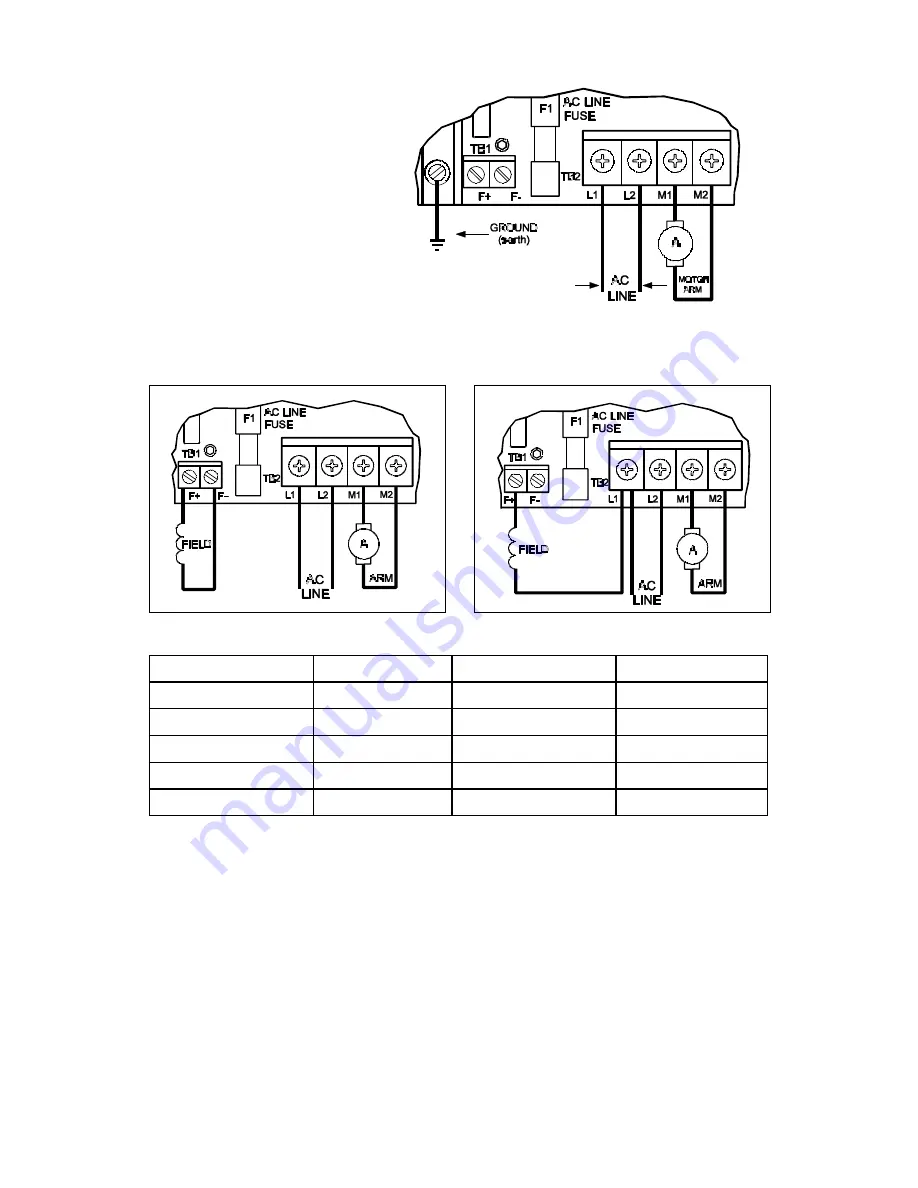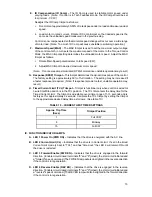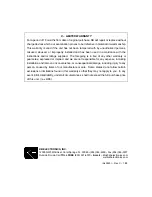
10
FIG. 6 – AC LINE AND ARMATURE CONNECTION
C. Field
(For Shunt Wound
motors
only
) – Do not
use F+ and F- terminals for any
other motor type. Connect
motor shunt field to terminals
F+ and F- for 90VDC motors
with 100VDC fields and
180VDC motors with 200VDC
fields. For motors with half
voltage fields, 90VDC motors
with 50VDC fields and 180VDC
motors with 100 VDC fields,
connect field to terminals F+ and L1. See table 7 for
summary of Field Connections.
CAUTION – Shunt-Wound motors may be damaged if field remains connected
without motor rotating for an extended period of time.
FIG. 7A – FULL VOLTAGE FIELD
FIG 7B – HALF VOLTAGE FIELD
TABLE 7 – FIELD CONNECTIONS (Shunt Wound Motors Only)
AC Line Voltage (VAC)
Motor Voltage
Field Voltage (VDC)
Field Connection
115
90
100
F+, F-
115
90
50
F+, L1
230
180
200
F+, F-
230
180
100
F+, L1
230
90*
100
F+, L1
*Step down operation (see sec. III C, p. 6).
D. Ground
– Be sure to ground (earth) the control via green screw located on chassis.
E. Main Speed Potentiometer
– The main speed potentiometer can be connected in several
ways using terminals "10," "11," "12," "13." ( A 5K ohm potentiometer is supplied with
control. A 10K potentiometer can also be used.)
[WARNING! Terminals “10,” “11,”
“12" and “13" are not isolated from AC line. Do not ground (earth).]
i.
Unidirectional operation only – Connect potentiometer to terminals "10," "12," "13" for
forward direction. (To operate in reverse direction, connect to "11," "12," "13.")
ii.
Bidirectional operation using reversing contacts – Connect to terminals "10," "11,"
"12," "13" as per fig. 8, p. 11.
iii. Bidirectional operation with potentiometer – Connect potentiometer to terminals "10,"
"11," "12" as per fig. 8, p. 11.




































